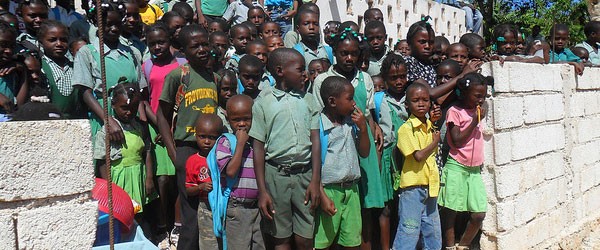 For decades, scores of Haitian villagers have been migrating from the countryside to the capital city, Port-au-Prince, in search of opportunities and in order to escape the isolation, absence of infrastructure, and lack of access to basic necessities such as medical care and education.
For decades, scores of Haitian villagers have been migrating from the countryside to the capital city, Port-au-Prince, in search of opportunities and in order to escape the isolation, absence of infrastructure, and lack of access to basic necessities such as medical care and education.
Over the years, this internal migration has put enormous pressure on the capital city, which saw its population expand from 690,168 in 1990 to about 846,247 in 2009.
The need for shelter in the Haitian capital gave rise to shanty towns, squatting, and poorly built structures, where a large segment of the population lives in squalid conditions and in abject poverty.
The scale of the devastation and loss of human lives as a result of the earthquake underscores the urgent need for decentralization in Haiti and for building sustainable communities throughout the Haitian countryside. In the wake of the earthquake which ravaged Haiti on January 12, 2010, internal migrants have fled the capital in droves and returned to their local communities throughout the countryside.
These returnees seeking refuge from the devastation and the increasingly untenable life in the Haitian capital quickly find themselves unable to adapt to the same and, oftentimes, worsened conditions that forced them to abandon their hometowns in the first place.
With no means of eking out a livelihood and still no access to the basic necessities, a large number of people displaced by the earthquake have made the hard choice of returning to the desperate situation they fled in Port-au-Prince, pitching their tents and erecting flimsy structures wherever they can, living once again at the mercy of the next disaster.
In the face of this seemingly endless cycle with no end in sight, residents of one particular village in Haiti have decided to join forces and be agents of the change that generations of Haitians throughout the countryside have hoped for in vain.
In the village of Lebrun (Miragoane), returnees from Port-au-Prince have mobilized the villagers and organizes a local volunteer corps in an effort to forge a way to a better future. Over 200 Haitian volunteers in Lebrun have come together to clear roads and discuss ways they can address the basic needs of the community.
HavServe Pilot Project
HavServe has launched a pilot community project in the village of Lebrun, which is located in southwest Haiti. Lebrun is surrounded by nine smaller communities. The village is ideally situated to serve as a central hub from which services and resources can benefit the residents of Lebrun proper as well as the surrounding communities. Approximately three hundred local villagers have been identified as volunteers and participants in HavServe projects and programs. International volunteers have already established a positive relationship with the community. They have worked with the villagers to launch educational, empowerment, and psychosocial development projects. These volunteers have also identified water and available land to meet MDGs 1, 5, and 6. A Lebrun Education Committee is working on MDG 2. Moreover, the Haitian diaspora from Lebrun is donating land for the building of an internet-ready, multi-purpose Education Center and a health clinic to meet MDGs 4 and 5. Volunteers have also established a women’s empowerment group and a youth empowerment group, addressing MDG 3.
Lebrun is a small village in the municipality of Paillant in the Miragoane Arrondissement, in the Nippes Department of Haiti. Lebrun is located 130 km southwest of Port-au-Prince, in the eastern part of the Department of Nippes, on the eastern flank of the Massif de la Hotte, between 18.2 degree and 18.3 degree north latitude of and between 73 degree and 73.2 degree West longitude on the other. It is bounded on the north by the town of Petite Rivière de Nippes, south by the town of Fond des Nègres, to the east by the first section of Chalon, and to the west by the town of Anse à Veau.
